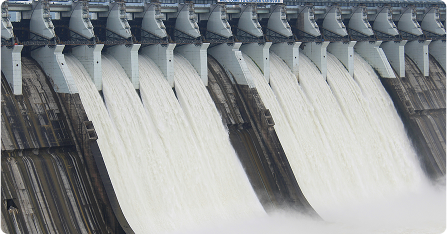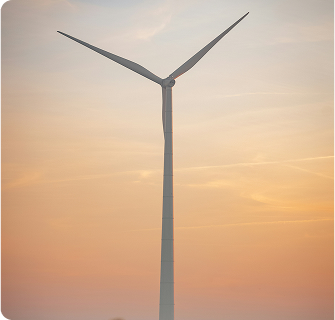

The energy we consume has a direct impact on our environment, especially at
Through the greenhouse gas emissions. In the quest for a sustainable future, he is
It is essential to understand which energies have the carbon balance the lowest. This
article explores the different energy sources and their carbon footprint, offering an overview
clear of the most sustainable energy solutions.
The carbon balance refers to the total quantity of carbon dioxide (CO2) and others
greenhouse gases emitted by a specific human activity. When we talk about energies, the
carbon footprint includes all stages of production, distribution and consumption of
energy. Measuring this balance makes it possible to determine the total environmental impact of a source.
of given energy.
These emissions include not only CO2, but also other powerful gases at
greenhouse effect like the methane (CH4) And the nitrous oxide (N2O). These gases contribute
All to global warming, making it critical to assess the carbon balance in the intake
energy decision.
Renewable energies are often cited as having the lowest carbon footprint
among energy sources. These energies come from resources that are reconstituted.
naturally, like the sun, wind or water, thus minimizing CO2 emissions.
Solar energy uses sunlight to produce electricity. The panels
Photovoltaics capture this energy without generating emissions during their
operation. Although the manufacture of panels may result in some emissions,
these are largely offset by the operational life of the systems
sun glasses.
In addition, the increased use of solar energy is making a significant contribution to reducing
the global carbon footprint, by reducing dependence on energy sources more
polluting. To explore how various types of energies can be integrated to
simplify your daily life, discover our complete range of energies on energy, without
move around.
Produced by the movement of the wind, Wind energy Is another source of energy
renewable with a low carbon footprint. It is based on wind turbines installed either in
on land or at sea. This form of energy does not produce any greenhouse gases during its
operation.
Continued technological advances are increasing the efficiency of wind energy,
allowing for higher energy generation with minimal impact on
the environment. Therefore, it is a key component of low energy strategies
global carbon.
Hydroelectricity takes advantage of the movement of water in dams to generate
energy. The initial installation may have an ecological impact, but once operational,
hydroelectric power plants emit virtually no greenhouse gases.
This source is particularly effective in regions with high levels of rainfall.
and important river networks. It is likely to remain an essential pillar of efforts.
to reduce the overall carbon footprint of energy systems.
Often surrounded by debates, Nuclear energy However, it has some advantages in
material with low greenhouse gas emissions. Nuclear power plants produce
large quantities of electrical energy with a very low volume of direct emissions
of CO2.
Despite its low emissions, nuclear energy raises concerns about
management of radioactive waste and the risk of accidents. However, its ability to provide
constant energy plays a vital role in energy transition strategies towards
low carbon systems.




Choosing energy with a low carbon footprint is already taking action for the planet. But with TANKYOU, you go further: simplified access to sustainable energies, optimization of your consumption and support for more responsible mobility. Switch to TANKYOU and turn your energy transition into a competitive advantage.
Unlike renewable and nuclear energies, fossil fuels such as the
Coal, oil and natural gas have a high carbon balance. The combustion of these
fuels directly release large quantities of CO2 in the atmosphere,
accentuating the greenhouse effect.
In addition to CO2, the combustion of fossil fuels also produces methane and
nitrous oxide, further worsening their environmental footprint. So, despite their
current abundance and their relatively low cost, it is becoming imperative to reduce
progressively the use of fossil fuels to mitigate climate change.
In particular, LNG is gaining popularity as a viable alternative thanks to its ability to
significantly reduce greenhouse gas emissions, according to this detailed article On the
heavy mobility.
La biomass refers to the use of organic materials for energy production.
This source can include agricultural residues, wood, or even household waste. La
Biomass combustion emits CO2, but the difference is in the short life cycle
carbon exchanged between plants and the atmosphere.
This rapid carbon recycling makes biomass potentially carbon neutral, according to
the method of production and the land management used. However, an operation not
sustainable use of biomass resources can affect this balance, stressing the importance of a
responsible management that is aware of cumulative effects.
Technological advances play a fundamental role in reducing the carbon footprint.
energy sources. New methods are continuously emerging, designed to
optimize energy efficiency and increase the integration of renewable energies.
Energy storage systems, such as new generation batteries,
make it possible to efficiently carry the energy produced by intermittent sources such as solar and wind. In addition, the improvement of electrical networks and the deployment of carbon capture and storage technologies contribute to further reducing the global carbon footprint.
The future of energy is based on an intelligent combination of various types Of low energies
carbon. Each one, whether solar, wind, nuclear or from biomass,
offers distinct advantages and challenges. Choosing the right energy options requires a
in-depth analysis of regional contexts and environmental goals.
Investing in these energy sources promotes a cleaner future and reduces impacts
harmful effects of climate change. With collective will and initiatives
innovative, achieving low carbon balances is becoming a tangible reality, ensuring
viable planet for future generations.

Fast charging improves productivity, reduces costs, and reinforces the sustainable commitment of corporate electric fleets.
